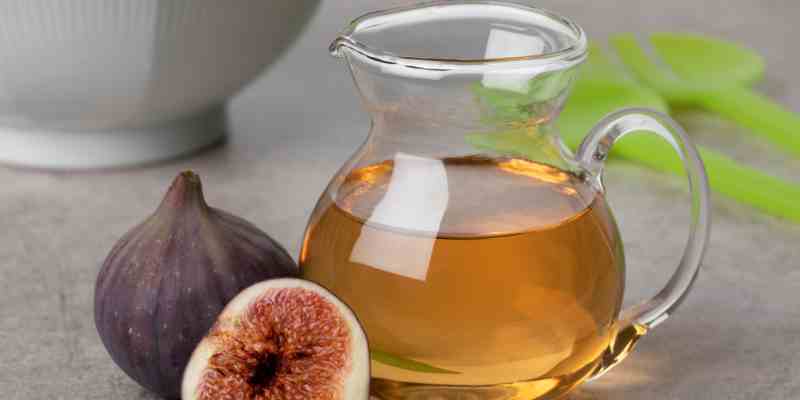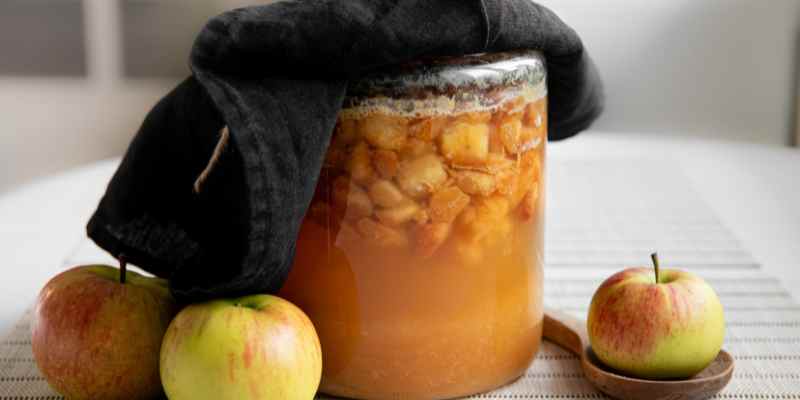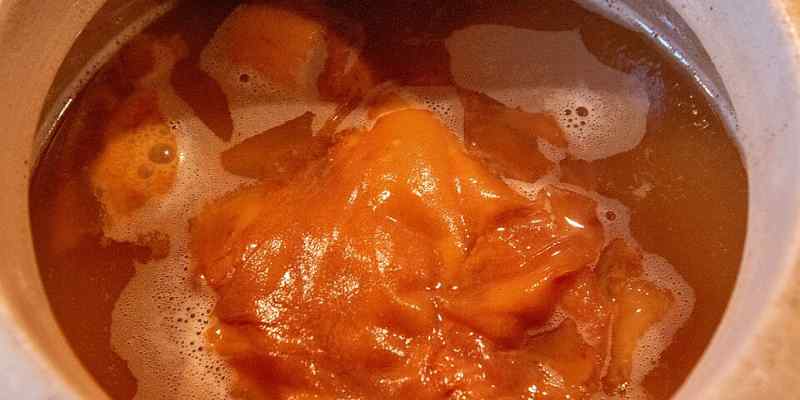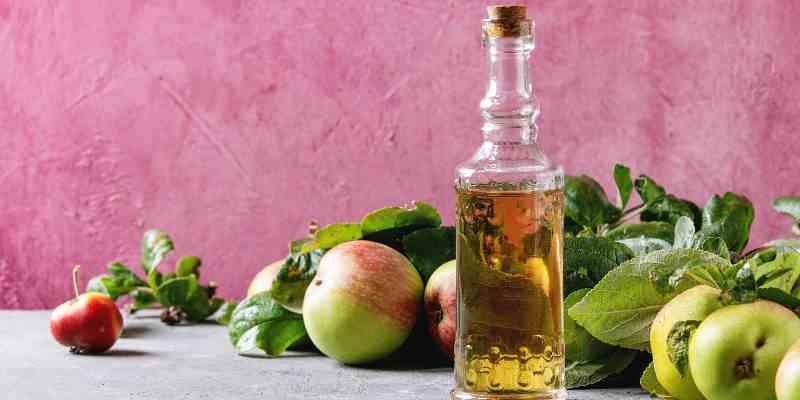Derived from the slow fermentation of fruits and decantation, fruit vinegar is quite easy to prepare at home. This somewhat forgotten activity that our ancestors used to do and which can be found in summer cooking magazines or on social media is part of a zero waste trend! It allows for the use of fruits that are spoiling or becoming overripe, and even peels and leftover fruit. Homemade fruit vinegar can be made with various fruits, from grapes and apples to mangoes or plums.
I’ll share everything you need to easily prepare your fruit vinegar at the end of summer!

What are the best fruits to make vinegar?
Vinegar always comes from fruits, traditionally grapes for wine vinegar and apples for cider vinegar, which are the most well-known.
However, other fruits are particularly suitable for making homemade vinegar, such as figs, pears, tomatoes (yes, they are fruits!), quinces, red fruits like raspberries, currants, and cherries, citrus trees or mangoes.
All these fruits have interesting flavour profiles for culinary use, such as mango vinegar in Asian dishes, red fruit vinegars for deglazing or with meats, or plum or fig vinegar for sweet and sour recipes.
In fact, we mainly consider these fruits among the most acidic and/or very sweet: they are well-suited for vinegar as they enhance fermentation. Citrus trees, currants, grapes, and figs are the most reliable.
My advice: it is always important to use well-ripened fruits. They are sweeter, thus promoting fermentation (with air, sugar feeds the acetic bacteria that will develop during the fermentation process).

When to make homemade fruit vinegar?
Summer or early autumn are two ideal times for obvious reasons: a wide variety of fruits are available, often in abundant harvests that one may not know what to do with, and the indoor ambient temperature is perfectly suitable for bacterial development, between 20° and 25°C.
Note: below 18°C, fermentation slows down; above 30°C, it may stop or lead to the appearance of mould.
Preparing your fruit vinegar
Ingredients and equipment
You will need only 4 ingredients: fruits, water, sugar, and… air!
- 1 litre of filtered or mineral water
- 100 g of white granulated or fine sugar
- 500 g of fruits (peels included, stones removed, if organic or untreated from the garden like plums or figs) or 300 g of fruits + 200 g of peels/core/pips (apples)
- A cutting board and a knife
- A 1.5 L glass jar
- A clean, breathable cloth or large piece of fabric (cotton or linen)
- A large elastic band
- A muslin cloth or fine towel for filtering
- A funnel
- A sterilised glass bottle
The recipe
- Dissolve the sugar in 600 ml of warm water and let it cool
- Wash and peel the fruits if they are not organic, remove damaged parts but keep the skin and pips
- Cut the fruits into large pieces and fill the jar up to 3/4 with the fruits and/or peels
- Add the sweetened water covering the fruits, leaving space at the top for fermentation; top up with 400 ml of cold water to achieve 1 L of liquid
- Cover with a cloth or fine towel and secure with the elastic band
- Let it macerate at room temperature for about 2 weeks, away from light
- stir the mixture every two days to oxygenate it
- After 3-4 days, bubbles will appear: alcoholic fermentation begins
- The water will start to cloud: the whole fruits and/or fermented peels create a "mother" on the surface, this famous deposit formed in homemade wine vinegar production

- After 3 weeks, strain the liquid by filtering it into a sterilised glass bottle, using a funnel placed over a fine mesh strainer or a chinois lined with muslin: press the fruits to extract maximum flavour, but do not force to avoid deposits
- Cover again with a small piece of cloth secured with an elastic band, for at least 3 weeks to 1 month, and store in a dark place
- Check that your vinegar has fermented properly: you should achieve a pronounced sour taste, with no sweet residues. If your vinegar is too mild, extend fermentation by 1 to 2 weeks
- Transfer to an airtight bottle.
My advice: feel free to use the peels, which contain natural yeasts that facilitate fermentation, provided they are organic and well washed.
Fruit vinegar: storage and uses
Homemade fruit vinegar can be stored for at least 3 years if kept in good conditions (in a dark place like a kitchen cupboard, and with an airtight cap). If your vinegar smells musty or has an unpleasant taste, discard it. A mother will naturally reform over time, which is normal.
Besides culinary uses (vinaigrette, marinades, deglazing and reductions, desserts, preparing brines or pickles, etc.), fruit vinegar is one of the eco-friendly gestures to replace commercial cleaning products with a very natural substitute, and it must be said, quite trendy. It can be used diluted or neat as a cleaner and descaler for the kitchen or bathroom, to deodorise your fridge, preferably using apples or lemons for these purposes.
My advice: raspberry vinegar is perfect with meats like duck. I use fig vinegar to deglaze fruit compote desserts or with cheeses.
































Comments